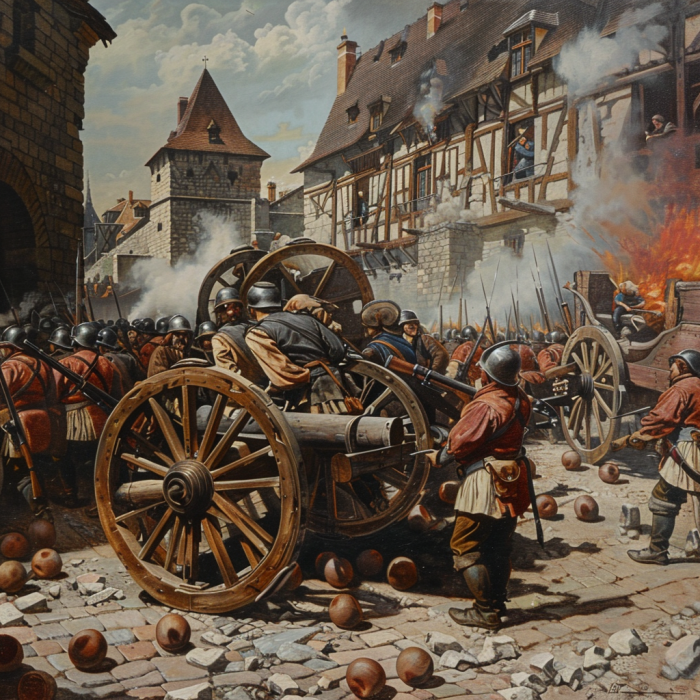Was Mimolette Cheese Really Used as Cannonballs?
MAY 30, 2024

Mimolette, with its distinctive orange hue and craggy, cannonball-like shape, dates back to the 17th century when it was commissioned by Louis XIV. The Sun King, in a bid to promote French products and limit imports, asked his cheesemakers to create a local variety of Edam cheese, which was highly popular in France but imported from the Netherlands. Thus, Mimolette was born, a cheese that resembled Edam but with a unique character.
Adding to the cheese's novelty was its creation process. Unlike other cheeses, Mimolette owes its distinct rind to the introduction of cheese mites – tiny creatures that nibble away at the cheese’s surface, producing its pitted appearance. These mites are carefully controlled by affineurs to ensure they do not overrun the cheese, striking a balance that contributes to Mimolette's complex flavor profile.
Now, onto the craziest part of its lore: the cannonballs. According to the legend, Mimolette has another name – Boule de Lille – which means 'ball from Lille', a city in northern France. It is said that during a siege in Lille, the French defenders ran out of cannonballs. Resourceful as they were, they turned to Mimolette cheese, firing these hefty, spherical wheels at their enemies. The hard, relatively lightweight cheese made for a surprisingly effective projectile, rattling troops and breaking morale from the impact – and then, presumably, providing a snack for the victorious French soldiers.
Of course, historical records do not confirm the use of cheese as a substitute for artillery. However, this story persists as a colorful embellishment to the already fascinating character of Mimolette. It paints a picture of the cheese being not just a culinary delight, but also an unexpected wartime hero.
Mimolette continues to be produced primarily in Lille and surrounding areas, holding steadfast to traditional methods. It’s enjoyed both young, with a mild, nutty flavor, and aged, boasting a deeper, more complex profile. The cheese remains a symbol of ingenuity and French pride.
So next time you savor a piece of Mimolette, remember the whimsical story of its supposed battlefield glory. Whether you buy into the cannonball myth or enjoy it as a fanciful anecdote, it’s part of what makes Mimolette a beloved cheese with a rich tapestry of historical charm.
In the world of cheese, some of the best stories may be more myth than fact, but they enrich our experience and appreciation of this beloved food. Here's to the delightful legends that add flavor to every bite!
More in True Stories
October 30, 2024
The Spooky Tale of Cheese and Halloween
June 02, 2024
How Did Cambozola Win Gold at the 2013 Global Cheese Awards?
June 01, 2024
How Did Stinking Bishop Cheese Become an International Sensation?
May 31, 2024
What Makes the Annual Cooper's Hill Cheese-Rolling and Wake So Thrilling?
May 30, 2024
Was Mimolette Cheese Really Used as Cannonballs?
May 27, 2024
Did the Soviets Carry Parmigiano-Reggiano Cheese on Soyuz 22?
May 26, 2024
How Has Carr Valley Sustained 14 Decades of Cheesemaking?
May 23, 2024
A Journey Through Time at the Reypenaer Tasting Room